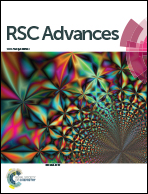Phase transition behavior and deformation mechanism of polytetrafluoroethylene under stretching
Abstract
The deformation mechanism and phase transition behavior of polytetrafluoroethylene (PTFE) under stretching conditions (25, 50, 100 °C) were investigated by using differential scanning calorimetry (DSC), small angle X-ray scattering (SAXS), and X-ray diffraction (XRD). Compared to the unstretched PTFE samples, stretching at all temperatures results in a reduced phase transition temperature (IV–I and II–IV). Above a critical strain εH,c (∼0.6), the decrease of phase transition temperature becomes more significant with the increasing strain. At higher stretching temperature, the value of the εH,c becomes smaller. By separating the recoverable (εH,r) and irreversible (εH,i) deformation, a similar εH,c (∼0.6) is found, beyond which the recoverable part remains basically unchanged while the unrecoverable part increases sharply. It is considered that as the strain reaches 0.6, both the untwisting of molecular chain and destroy of the crystal structure could occur, which leads to the increased plastic deformation of the system. Upon the strain is beyond 0.9, the degree of chain untwisting reaches the maximum, and a stable oriented fiber network structure forms, showing the phenomenon of elasticity enhancement. The deformation mechanism of PTFE changes from lamella slip at small strain to stretching induced formation of stable fibrils as evidenced by SEM and SAXS.



 Please wait while we load your content...
Please wait while we load your content...